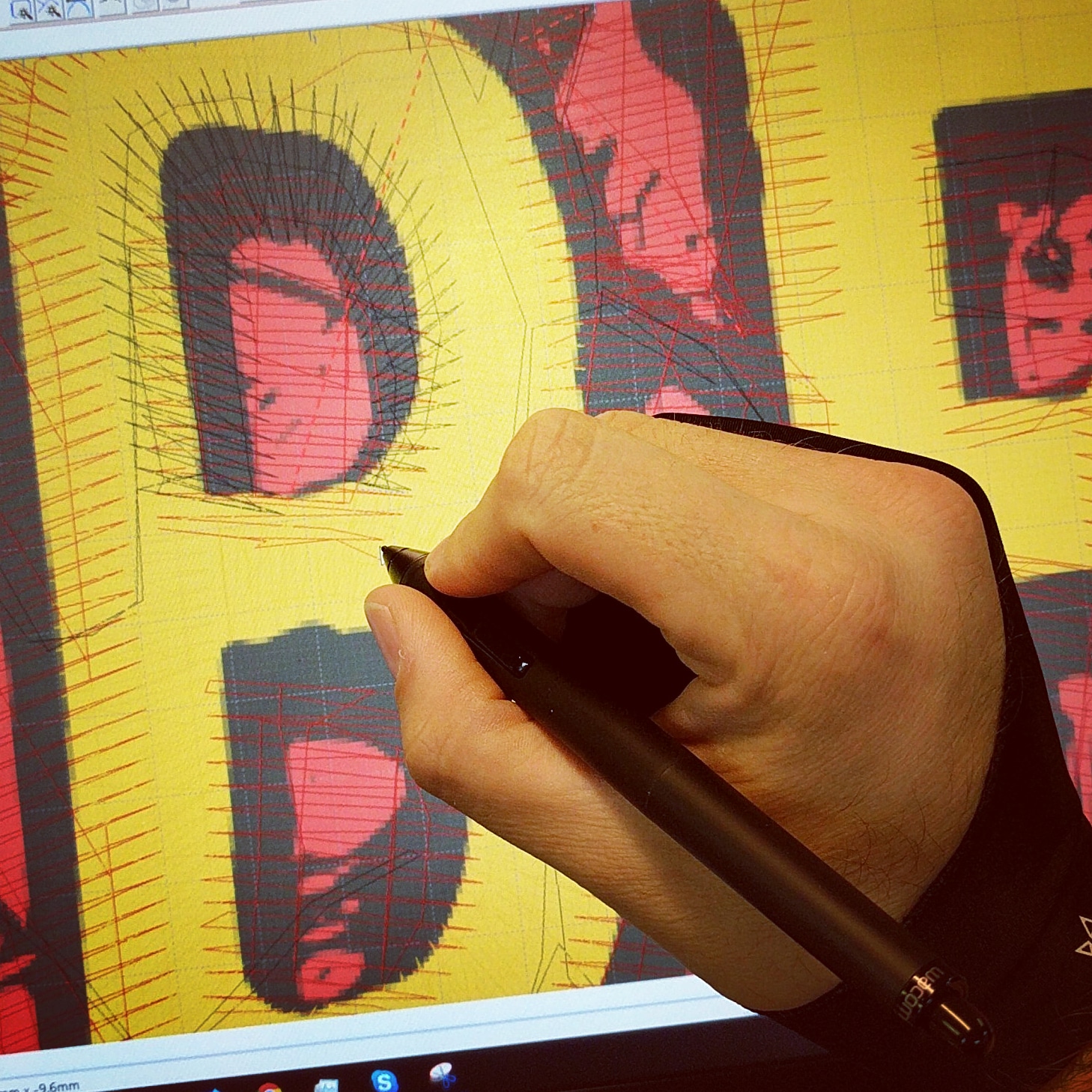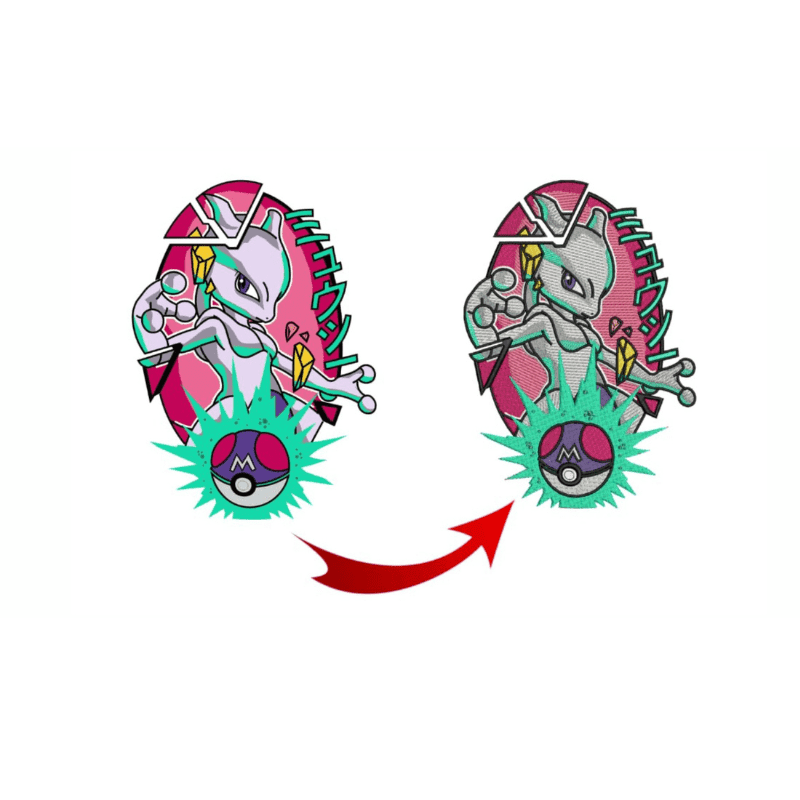Expert Digitizing for Embroidery: Quick and Reliable Solution
Expert Digitizing for Embroidery: Quick and Reliable Solution
Blog Article
Simplifying the Art of Embroidery Digitizing: Step-by-Step Overview
As innovation continues to advance, the digitization process has come to be much more obtainable, permitting enthusiasts to bring their elaborate layouts to life with ease. In this overview, we will untangle the intricacies of embroidery digitizing, damaging down each step carefully to improve the process and empower both newbies and skilled embroiderers alike.
Recognizing Needlework Digitizing Software Program
Needlework digitizing software program serves as a vital device for changing intricate styles into digital styles suitable with needlework machines, helping with precise stitching and modification. This specialized software application permits users to import different photo documents formats, such as JPG or PNG, and transform them right into embroidery machine-readable styles like DST, EXP, or PES - Digitizing for Embroidery. By making use of functions like stitch editing and enhancing, underlay choices, and string shade selection, digitizing software application enables individuals to control every facet of the style process
In addition, progressed embroidery digitizing software supplies tools for creating complex styles, changing stitch density, and integrating elaborate details. Individuals can additionally sneak peek the design prior to sewing it out, ensuring precision and minimizing errors. Furthermore, numerous software programs supply automatic features that assist improve the digitizing process, conserving effort and time.
Recognizing the capabilities of needlework digitizing software is important for achieving high-quality cause embroidery tasks. By understanding this device, needlework enthusiasts and professionals can unleash their creative thinking and bring elaborate styles to life with accuracy and performance.

Selecting the Right Style Data
After acquainting yourself with the capacities of embroidery digitizing software application, the next crucial action in the procedure is choosing the right design documents for your project. Digitizing for Embroidery. When selecting a style file for needlework digitizing, it's important to take into consideration the complexity of the design, the dimension of the end product, and the sort of fabric you will certainly be collaborating with
For detailed styles with great information, a high-resolution image or vector data is advised to make certain that the embroidery device can properly reproduce the design. In addition, the size of the end product plays a significant function in picking the best layout file. Bigger layouts may require higher resolution documents to keep clearness and sharpness.
Additionally, the type of material you will certainly be embroidering on influences the selection of design data. Various fabrics might call for modifications in the layout file to make sure that the stitches are correctly straightened and the design shows up as intended. By very carefully selecting the appropriate design documents based on these aspects, you can set on your own up for a successful needlework digitizing process.
Digitizing Devices and Techniques
Utilizing specialized software program and precision strategies, digitizing tools are important in changing detailed styles right into embroidery-ready files. Needlework digitizing software application, such as Wilcom, Hatch, or Embrilliance, supplies the necessary system to transform artwork right into stitch data. These programs offer attributes like stitch editing and enhancing, rug options, and lettering tools to have a peek here ensure the style converts effortlessly onto fabric.
Among the vital techniques in digitizing is developing a clear path for the needlework equipment to follow. This involves digitizing each component of the layout with accuracy, identifying stitch types, densities, and directions. By making use of devices like digitizing tablets or software-specific plugins, embroiderers can achieve a high level of accuracy in their digitized designs.
Additionally, grasping the art of rug sewing is essential for creating high quality needlework. Underlay sewing maintains the textile and produces a structure for the layout, guaranteeing that the last item is both visually attractive and long-lasting. By understanding these digitizing tools and techniques, embroiderers can elevate their craft and bring elaborate styles to life with accuracy and effectiveness.
Personalizing Stitch Kinds and Directions
The option of stitch types can substantially impact the total look and appearance of the embroidered style. By strategically integrating these stitch kinds, embroiderers can achieve deepness and measurement in their designs.
Moreover, the direction of stitches plays an essential duty in enhancing the aesthetic charm of the last needlework. By exploring with various stitch angles and patterns, embroiderers can bring their styles to life with remarkable detail and details.
Screening and Refining Your Digitized Design
To make certain the precision and top quality of your digitized style, complete screening and refinement are necessary action in the embroidery digitizing process. When you have actually completed the digitization of your design, it is essential to evaluate it before waging the real needlework. Checking enables you to identify any possible concerns such as string breaks, stitch density problems, or layout distortions that might impact the final result.

After testing, it is essential to fine-tune your digitized style based upon browse this site the comments from the examination sew-out. This might involve tweaking sew setups, readjusting densities, or making changes to the general style to attain the desired outcome. By repeating through screening and great post to read improvement, you can tweak your digitized style to perfection before moving on with the real embroidery process.
Conclusion
To conclude, grasping the art of embroidery digitizing calls for a comprehensive understanding of the software, picking the best layout data, utilizing digitizing devices and techniques, tailoring stitch types and instructions, and testing and improving the digitized design. By adhering to these steps, embroiderers can streamline the digitizing process and develop high-grade embroidered designs with accuracy and efficiency.
Report this page